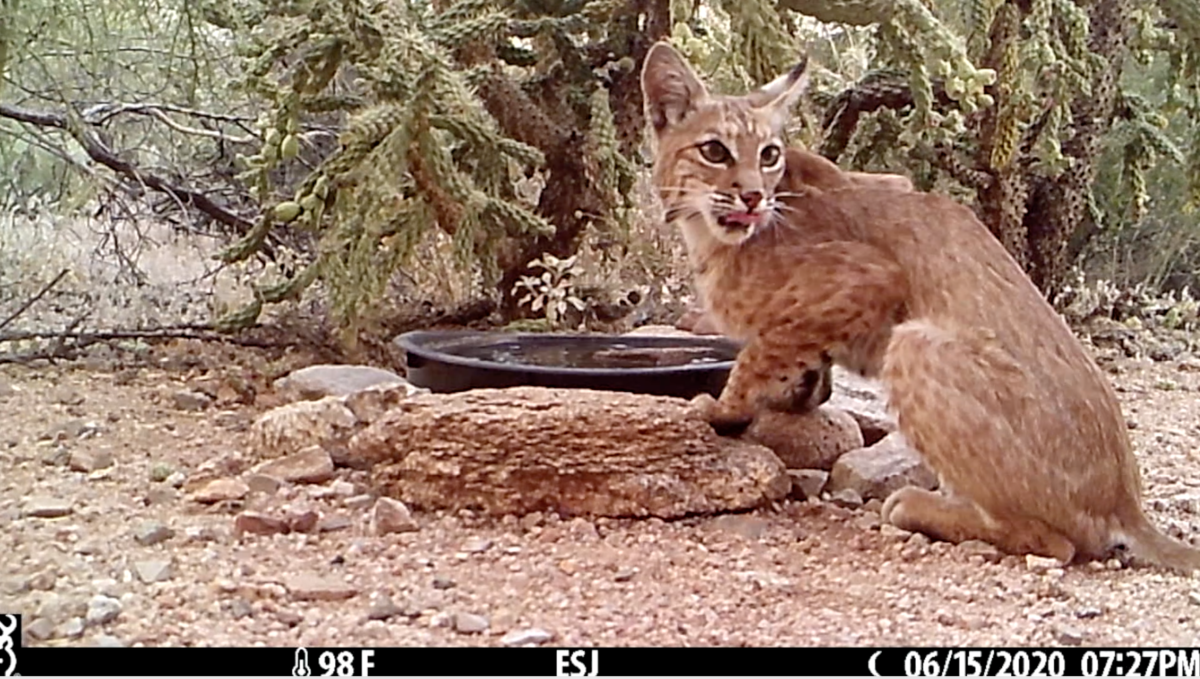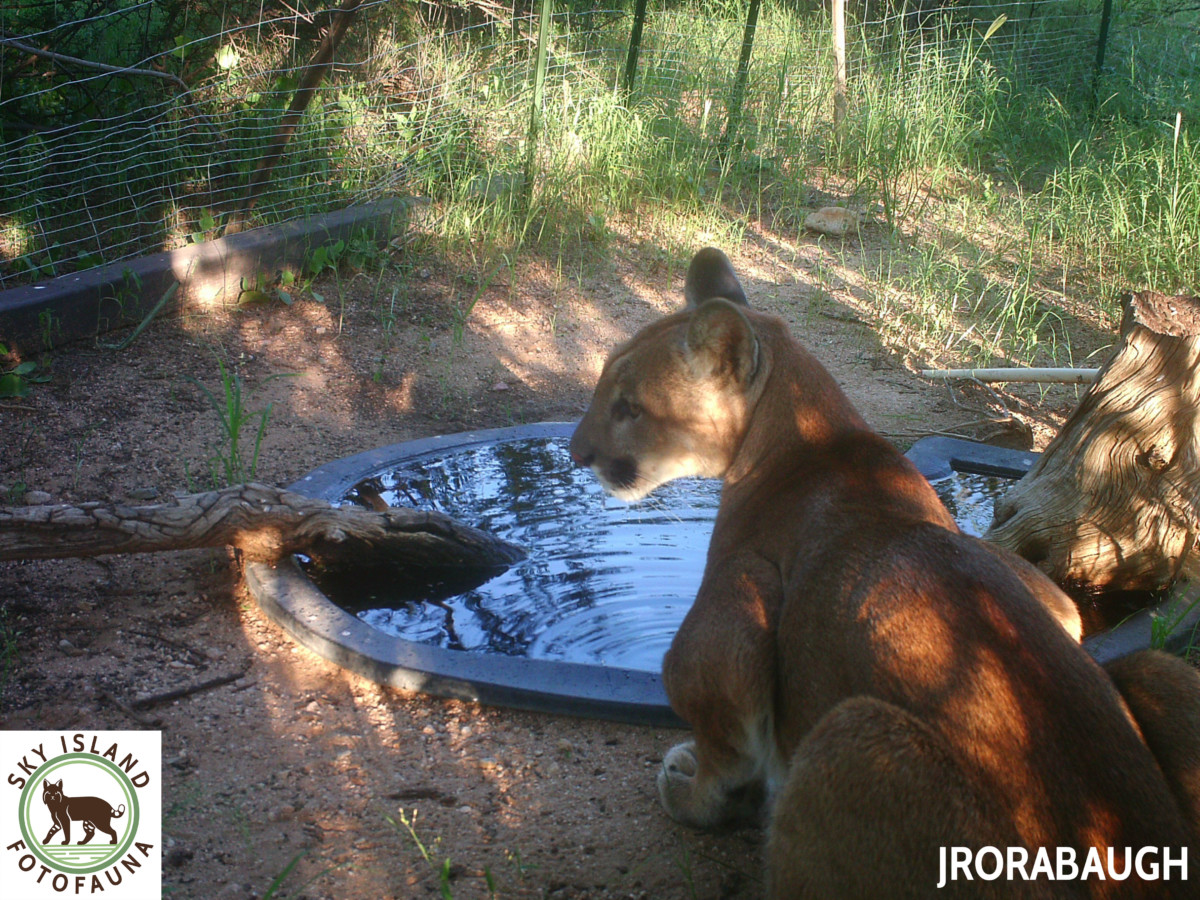We envision a world where iconic wild cats thrive, a world where park staff and local communities are united and provide safe passage for wildlife across public lands and private ranches in Northern Mexico and Southern Arizona.
Since we hope to advance this vision through our 1,000 Cats Project, we are offering this series of tips to help you protect bobcat, mountain lion, jaguar, and ocelot — as well as other wildlife — in your own backyard.
[ #1: Say No to Using Rat Poison | #2: Brake for Bobcats! | #3: Domestic Cats ]Tip #4: Add Your Yard to This Year’s Spring Cleaning
Yards are good for so many things: visiting with family and friends, lounging in the sun, and bird watching. But they also double as habitat for wildlife such as pollinators, reptiles, and larger mammals like javelina, deer, coyote, and bobcat.
Some of these species are urban-adapted, returning again and again to grace our water bowls and backyard trail cameras. Others are just passing through on their search for shelter, food, and mates.

Photo Caption: A thirsty bobcat visits a residential yard in Tucson, Arizona.
To make sure wild cat species — like mountain lion and bobcat — also pass through without conflict, it’s a good idea to remove any temptations or distractions that might make them linger in your yard.
Here are a few tips you can use this spring to reduce human-wildlife conflict in your yard.
1. Deter rodents from nesting.
Rodents make prime meals for hungry cats, so rodent nests can cause trouble in human-occupied areas. Stop to consider if you have anything in your yard that might provide nesting habitat for packrats or other rodents.
A pile of firewood? A shed with a gap underneath? Clean these out to deter nesting, and wild cats will hunt elsewhere. But please, skip the rodenticides — they’re meant for rodents but can kill our wild cats.
2. Elevate your bird feeders.
Bird feeders, like suet and seeds, can attract cats of all types to your yard. Consider hanging bird feeders higher off the ground, like from a tall tree, to prevent birds from congregating low to the ground where a bobcat might be waiting. If cat sightings remain prevalent, you may need to remove the bird feeders entirely.

Photo Caption: Bobcats like this one may be found in backyards, as well as in wild places. © Tim Cook.
3. Monitor your pets and keep them indoors at night.
If you can, keep domestic cats inside. If you can’t, use these tips to help protect your pets and wild cat species. Small dogs can also be considered prey for large cats — as well as coyotes — so keep an eye on them and bring them inside at night. If you live in an area with known bobcat or mountain lion sightings, monitor your outdoor dogs and cats even during the day.
4. Don’t bait wildlife with food.
If you have a wildlife camera in your yard, don’t bait it with food. (Water is fine, however.) Baiting with food may get you some good photos, but it can also attract unwanted visitors to stick around your property long-term. This includes wild cats but also raccoons, bears, javelina, and insects.
Trust us, baiting is not worth the hassle.

Photo Caption: This mountain lion, detected on a Sky Island FotoFauna camera, is offered water only.
5. Remove or secure your garbage.
If you store garbage in your yard, make sure the bin has a lid that you can close and secure. Garbage that is left unsecured can encourage wildlife to return to your property for a snack.
6. Securely house chickens and other fowl.
If you have chickens, ducks, or other types of fowl, these often attract cats. Hard to help; to a bobcat or mountain lion, fowl look, sound, and smell like a free meal! To ensure limited fatalities, securely house your fowl in an enclosure with a strong roof where they will remain stress free and avoid run-ins with a hungry neighborhood bobcat.
Living Well and Coexisting with Urban Wildlife:
Want more ideas for living well with wildlife? Watch this clip on reducing human-wildlife conflict from our Fall 2021 webinar. The video starts at 18 minutes.

